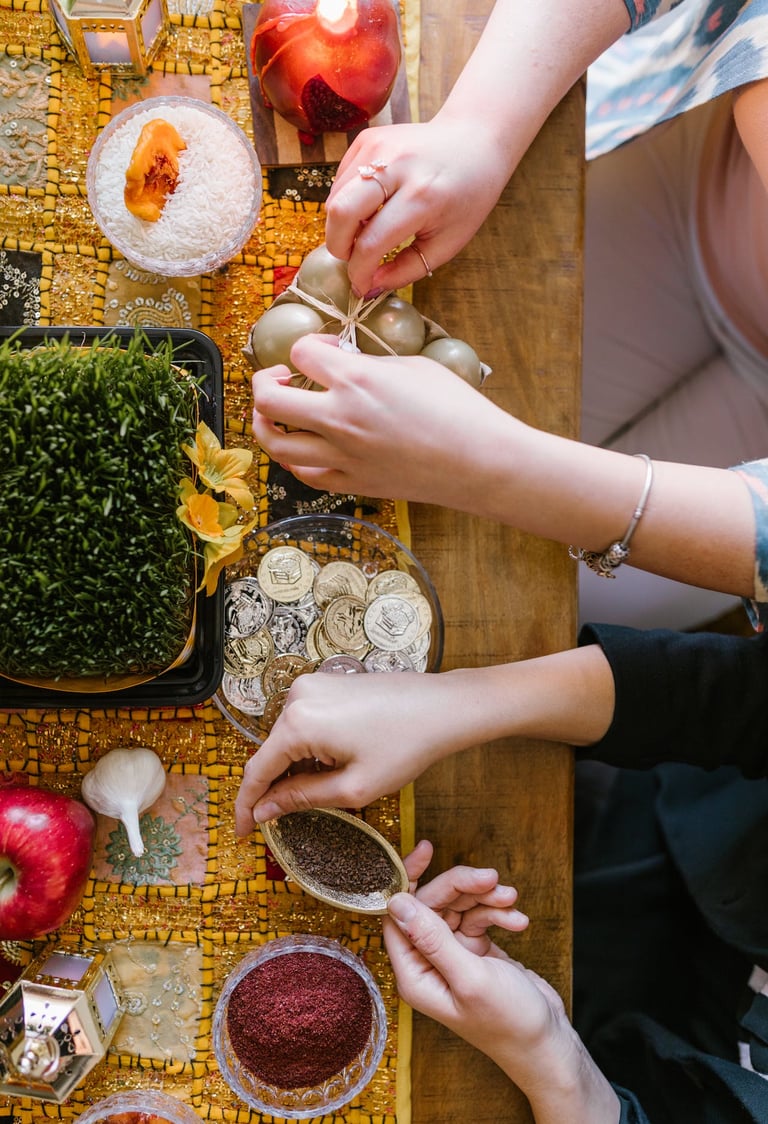Nowruz, which translates to "New Day" in Persian, is a celebration that marks the arrival of spring and the beginning of the New Year in various cultures and communities around the world. This ancient festival has roots in the traditions of Zoroastrianism and has evolved over thousands of years to become a symbol of hope, renewal, and cultural unity. Let's explore the significance, customs, and global diversity of Nowruz, a festival that transcends borders.
Historical Roots:
Nowruz has deep historical roots, dating back to ancient Persia. Its origins can be traced to the Zoroastrian tradition, where it symbolized the victory of light over darkness and the triumph of good over evil. The festival was associated with the vernal equinox, the moment when the length of day and night are approximately equal, signifying the arrival of spring.
Over the centuries, Nowruz has endured various geopolitical changes and cultural influences, adapting and integrating elements from different regions and communities. Today, it is celebrated by diverse groups, including Iranians, Kurds, Afghans, Central Asians, and others who have embraced this joyous occasion.
Timing and Symbolism:
Nowruz usually takes place on or around March 20th or 21st, aligning with the astronomical beginning of spring. The exact date is determined by astronomical calculations and may vary slightly among different communities. The festival lasts for approximately two weeks, encompassing various customs and rituals that herald the arrival of the New Year.
The symbolism of Nowruz is deeply rooted in nature. It signifies the rebirth of the Earth after the winter slumber, with flowers blooming, trees budding, and the landscape transforming into a vibrant tapestry of colors. This natural symbolism aligns with the broader theme of renewal and rejuvenation that defines the spirit of Nowruz.
Nowruz - Persian New Year


Haft-Seen Table:
A central feature of Nowruz celebrations is the Haft-Seen table, a display of seven symbolic items, each starting with the Persian letter 'S' (س). These items include Sabzeh (sprouted wheat or barley representing rebirth), Samanu (sweet pudding symbolizing power and strength), Senjed (dried oleaster fruit for love and compassion), Seer (garlic cloves representing medicine and good health), Seeb (apples for beauty and good health), Somāq (sumac berries symbolizing sunrise and patience), and Serkeh (vinegar for aging and patience).
The Haft-Seen table serves as a visual representation of the hopes and aspirations for the coming year. Families meticulously arrange these items on a spread, often accompanied by other symbolic and decorative elements. The display becomes a focal point for gatherings, fostering a sense of unity and connection among family members and friends.
Chaharshanbe Suri:
The festivities leading up to Nowruz include Chaharshanbe Suri, a fire-jumping ritual that takes place on the last Wednesday before the New Year. People gather in open spaces, creating bonfires and jumping over the flames while reciting a traditional chant. This act is believed to cleanse individuals of illnesses and misfortunes, paving the way for a fresh start in the New Year.
Chaharshanbe Suri is not only a physical act of leaping over the fire but also a symbolic gesture of leaving behind the old and embracing the new. The crackling flames and the communal energy create an atmosphere of joy and anticipation.
Challenges and Resilience:
While Nowruz is a time of joy and celebration, it has faced challenges in certain regions. Political and social changes have affected the way the festival is observed in some areas, and the preservation of its cultural heritage requires ongoing efforts.
Additionally, in recent years, Nowruz has encountered disruptions due to global events and health concerns. The COVID-19 pandemic, in particular, has prompted adjustments to traditional celebrations, with virtual gatherings and creative adaptations becoming the norm.
Conclusion:
Nowruz, with its rich history, cultural symbolism, and global significance, stands as a testament to the enduring human spirit. As a celebration of nature's renewal and the triumph of light over darkness, Nowruz transcends borders, bringing people together in a shared expression of hope and optimism for the future. In a world where diversity is celebrated, Nowruz serves as a reminder that cultural traditions can act as powerful threads weaving a tapestry of unity and understanding among people of varied backgrounds.
Address
Soan Garden, Islamabad
Pakistan
Contacts
WhatsApp: +92-321-9012647
Email: shafqat@foodandfestivals.com